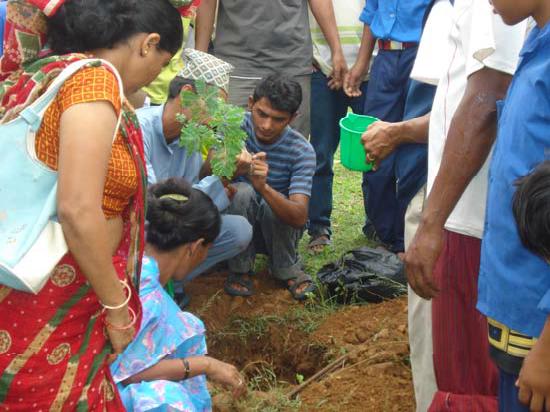Damodar Gaire
Other projects
7 Dec 2005
Assessment of Community-Based Biodiversity Conservation and Rural Livelihood Improvements in the Buffer Zone of Royal Bardia National Park, Nepal
The aim of the project is to create the community awareness among the indigenous people, school students and teachers on conservation education and disseminate their activities in local, national and international levels.

Conservation Education and Communication (CEC) has always been an integral part of the biodiversity conservation. Therefore, we have intended to work among the indigenous people and students in Lamjung district where there has not been conducted any conservation related activities before. Some parts of Lamjung district are within the buffer zone of Annapurna Conservation Area (ACA). Some activities related to conservation education have only restricted within the buffer zone of ACA. Therefore, this project will equally focus on the conservation education and communication project outside the buffer zone of ACA (especially in the eastern Lamjung) where there are also the prone habitats for the endangered species of wild flora and fauna.
At the commencing of the program, 5 days workshop (entitled "Community Based Biodiversity Conservation") will be organized and conducted in villages (either in VDC halls or School buildings). School based environmental clubs will be formed in three different VDCs of Lamjung district. Altogether 15 eco-clubs will be formed in the project area where there were not such environmental related activities before. Various environmental awareness and extension programs including campaigns, celebrations of the environmental days, audio/visual programs and street theatre will be organized at local levels to create awareness on conservation issues among the local community. Therefore, we will organize various awareness and capacity building programs to increase the capacities of local people to conserve and sustainably manage the biological diversity in a way that is ecologically viable, economically beneficial and socially equitable. The following are the objectives which will initiate in proposed areas:
1 To provide individuals and communities with a basic knowledge and understanding of the environment, the biodiversity and their inter-relationship with humans. (Knowledge);
2 To promote awareness and a sensibility in individuals and communities about the environment, the biodiversity and its problems. (Awareness);
3 To encourage individuals and communities to value the environment and consider it important in order to inspire participation in the process of improving and protecting the environment for the betterment of their own livelihoods. (Attitude);
4 To provide people with skills to identify, predict, prevent and solve environmental problems and to make them capable of utilizing limited resources in a sustainable way and of coping with unexpected vulnerabilities. (Skills);
5 To provide individuals and communities with the opportunities to actively participate in solving environmental problems and to make educated decisions about biodiversity conservation. (Participation ).